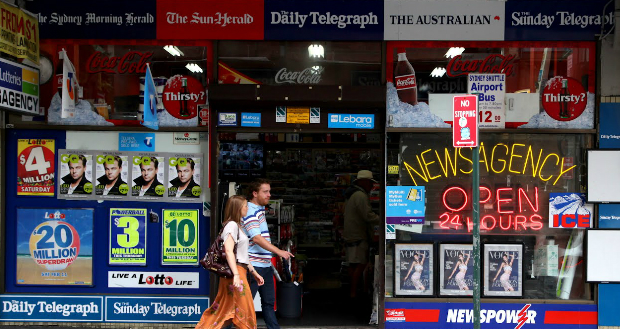
One of the most interesting trends of the last decade has been the convergence of design and print buying; that is, designers who buy print rather than print buyers who design.
Just about three-quarters of all printing jobs include the direct involvement of a “creative”, most often a graphic designer. The graphic designer creates the visual look and assembles text and imagery. The designer selects the colours and the paper. The designer prepares the file and submits it to the printer. The designer approves the proof. The designer makes changes. The designer approves the final job.
For the other 25 per cent of all print jobs design is indirect. It could be as simple as selecting a slide design in PowerPoint, or clicking a pre-designed business card layout and filling in some blanks on a screen and seeing a proof, or using a page template in a word processing or page layout. Secretaries and even lesser skilled managers can thus specify and buy (pre-)designed print products.
Thus, every print job involves a creative originator. What department do creatives work in?
- Design/Creative 39%
- Purchasing 19%
- Marketing 29%
- Communications 12%
- Other 1%
In other words, they are all over the organisation. But those are the internal creatives – there are also outside creatives who work on company projects. What do creatives design?
- Print 94%
- Internet 77%
- POP/Sign/Display 64%
- Packaging 53%
- Other 67%
In the last few years, the role of designers has expanded to include print buying. In fact, some marketing and communications departments contract with an outside designer to lump the printing in with the design purchase. This may bypass the need for three bids and allow the selection of a printer that the designer feels will meet the quality standard. Internally, one will find more print buyers have the title “designer” than “print buyer”. As a result, more creative professionals buy printing than ever before.
There is no lack of designers. Every year 40,000 graphic designers graduate from two-year and four-year baccalaureate programmes in the USA. They work in four major areas: publishing, printing, corporate, and commercial services.
Commercial services includes ad agencies, art and design studios, freelancers, display, and marketing services. All together, there are 515,000 graphic designers in the USA. Other creatives include illustrators, photographers, artists, and editorial professionals.
For corporate America, graphic designers work in many different departments: ad/promotion, in-plant printing, inhouse graphic services, technical documentation, inhouse presentation services, inhouse publishing, and others.
But here’s the rub – most designers lack skills in file preparation, paper choices, mail standards, and other areas that affect the cost of the job. Let’s look at each area.
File prep: Programmes like Adobe InDesign and QuarkXPress provide significant functionality to translate an aesthetic vision into a printable file. Word and Microsoft Publisher do not have the proper functionality. But many designers still cannot get RGB and CMYK right, use fonts that do not embed in PDFs, or use low res images. There should be courses that update designer skills.
Paper choices: There are a gazillion paper choices and the selection should be based on both the ultimate recipient and the means of distribution. Paperspecs.com can help.
Mail standards: Almost half of everything that is printed is mailed and there are rules for weight, folds, tabs, and size. Break them and the customer pays.
Colour: Process colour today is a bargain but watch those spot colours. Do you really need a fifth colour or would a tint of CMYK do?
Changes: Never-ending tweaking is a costly practice. Eighty-two per cent of all print jobs have changes of some kind after the job is sent for printing. Measure twice, cut once, and then send it to the printer.
Job specs: This is where the print buying skills kick in. Picking the right printer with the right equipment is as important as that low price. Communicating with knowledgeable print reps will help to refine the specs and also identify cost-saving options.
There is a movement in many companies to save money by cutting print volumes. Those companies could actually save more money through more effective design and print buying practices.
Comment below to have your say on this story.
If you have a news story or tip-off, get in touch at editorial@sprinter.com.au.
Sign up to the Sprinter newsletter



